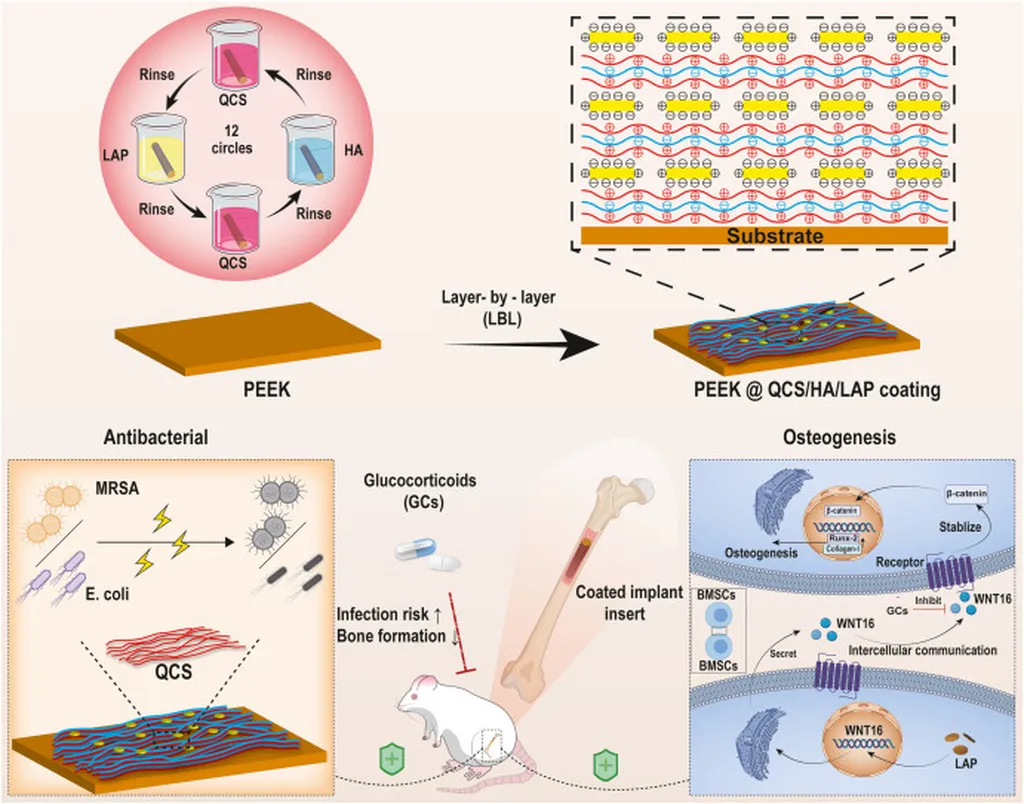In a groundbreaking development poised to revolutionize the construction and medical industries, researchers have unveiled a novel approach to enhance the performance of bone implants, addressing two critical challenges: initial infection and poor osseointegration. The study, led by Junjie Zhou from the State Key Laboratory of High Performance Ceramics at the Shanghai Institute of Ceramics, Chinese Academy of Sciences, introduces a multilayer film on polyetheretherketone (PEEK) surfaces that dynamically regulates the ionic and immune microenvironments to sequentially combat bacteria and promote bone integration.
The innovation lies in the film’s unique structure, featuring layers of magnesium oxide (MgO) with differing degradation rates. “This design allows us to create a temporal sequence of biological responses,” Zhou explains. “In the early stages post-implantation, the outer layer of MgO rapidly degrades, creating a strongly alkaline environment and releasing a high concentration of magnesium ions. This disrupts bacterial energy metabolism and stimulates macrophages to engulf planktonic bacteria, effectively preventing infections.”
As the outer layer degrades, the inner layer of MgO slowly releases magnesium ions over a prolonged period. This sustained release directly stimulates osteoblasts, the cells responsible for bone formation, and induces macrophages to promote bone integration. “The result is a synergistic effect that not only combats infection but also enhances bone growth and integration,” Zhou adds.
The implications for the construction and medical industries are substantial. Bone implants are widely used in orthopedic surgeries, dental procedures, and trauma care. However, implant-related infections and poor integration have been persistent challenges, often leading to implant failure and the need for revision surgeries. This new technology could significantly reduce these complications, improving patient outcomes and lowering healthcare costs.
Moreover, the film’s ability to control the polarization time of cells by adjusting the outer layer’s thickness offers versatility for different clinical scenarios. “This adaptability makes our approach highly promising for a wide range of applications,” Zhou notes.
The study, published in the journal Bioactive Materials (translated to English as “Active Biological Materials”), demonstrates the film’s effectiveness in a rat femoral implantation model, confirming its potential for clinical translation. The research highlights the importance of the extracellular microenvironment in mediating cellular and bacterial behaviors, paving the way for future developments in implant technology.
As the construction and medical industries continue to evolve, innovations like this multilayer film on PEEK surfaces are set to play a pivotal role in enhancing the performance and longevity of bone implants. By addressing critical challenges and improving patient outcomes, this research not only advances scientific understanding but also offers tangible benefits for commercial applications in the energy sector and beyond.

